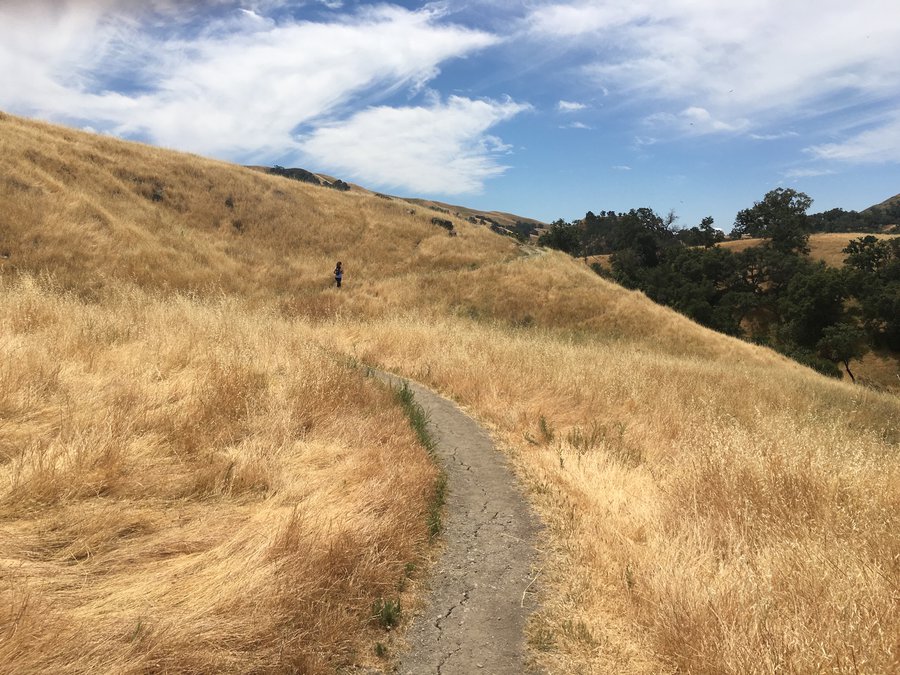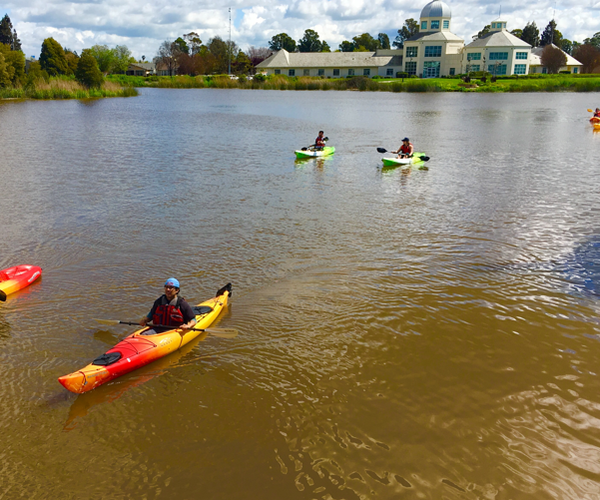SUNOL — Cascading waterfalls, natural swimming pools, and thick tree cover in the middle of nowhere.
It’s no wonder that they call the gorge that’s a sliver of the Sunol Regional Wilderness “Little Yosemite.”
In the spring and early summer the “pools and drops” that form near the headwaters of the Alameda Creek are often liberally sprinkled with families, teens, and couples frolicking in the cool shallow waters, playing under waterfalls and relaxing on granite rocks beneath a thick canopy of coastal oaks.
“Little Yosemite” — which may start to run dry as July nears — is just one of the reasons that make a day trip or even overnight backpacking to the Sunol Regional Wilderness so appealing.
The others are easy to access areas along Indian Joe Creek suitable for picnics, enjoying nature, or just kicking back; numerous hiking trails; and access to arguably one of the best but least known attractions of the Bay Area — the Ohlone Regional Wilderness.
The most surprising thing is how “wild” it is given it’s off Interstate 680 — the commuter artery that ties San Jose and the Santa Clara Valley with Pleasanton and the Amador Valley.
It doesn’t take a drive too far down Calaveras Road heading east from the freeway to realize this is not your typical Bay Area outdoor destination.
Trees crowd the road and provide a cooling canopy. Hawks and vultures outnumber the vehicles. And while you’ll pass a commercial endeavor or two including a wholesale nursery specializing in large box trees you won’t spy a single house as you travel 4.3 miles east on Calaveras Road. You can’t miss the left turn to Geary Road that terminates after 1.7 miles into the Sunol Regional Wilderness parking lot thanks to the road being blocked as crews replace the Calaveras Dam.
There is a $5 parking fee to access the Sunol Regional Wilderness. The park opens at 8 a.m. with changing closing times throughout the year. The gates are locked overnight. Campers must sign in before dusk. To access the much larger Ohlone Wilderness Area that abuts the Sunol Wilderness area you need to buy a permit that is good for a year at the Sunol entrance station. You must make backpacking reservations by phone at 1-(888) 327-2757, option 2, Monday through Friday from 10 a.m. to 3 p.m.
You can also access the Ohlone Wilderness from Del Valle Regional Park south of Livermore or the Coyote Hills Visitors Center in Fremont where you access the Mission Peak Regional Preserve. The Ohlone permit comes with a map.
Between the four areas there are 16,500 acres you can wander. That is almost 26 square miles of bliss away from the Bay Area hustle and bustle. There are 6,958 acres in the Sunol component.
If your goal is just to visit Little Yosemite, there is a relatively flat path that is a dirt road with restricted vehicle use to cover the two-mile distance. There is also a more interesting trail that goes up along the edge of hills and drops down.
Depending upon how much more rain we get, the window to enjoy the falls and pools of water is rapidly closing as we enter spring. Normally they’re history by late May or early June.
Of course, I went to go to hike.
Typically the best time to hike Sunol is from September to May. There are six main trails that interconnect as well as dead end trails that take you to viewing points.
I prefer a 7.6 mile loop consisting primarily of the Indian Joe Creek and Cerro Este Trails with a couple of side trips that involved doubling back to the loop route I picked to rack up nine miles.
The loop’s high point was 2,038 feet with a net elevation gain of 1,500 feet. It’s rated moderate to strenuous. With the side trips tossed in it took just about four hours.
While parts of the loop have tree cover, a significant part is exposed to the sun if you do it as spring unfolds and turns into summer. It’s best to start early.
What sets this hike apart from Pleasant Ridge, Del Valle, Joseph Grant (near the Hamilton Observatory), Mission Peak, Mt Diablo, and even the Ohlone Wilderness was the relatively few people who opted to use the trails to make a loop instead of enjoying the area around the visitors center, heading to Little Yosemite or destination for backpacking overnight in the Ohlone Wilderness.
Once I left the heavily traveled hillside trail to Little Yosemite and got back into the trail near the Visitors Center I passed three people in six miles.
Then there are the views. There were spots on the backside where you could scan the horizon for 360 degrees and not see a structure, telephone pole, cell tower or any sign of civilization save the trail. Instead it was a golden panorama with dashes of green as well as clusters of oaks and bushes just like Spanish Explorers saw in 1776 when they trudged through the range.
There is also a view of Calaveras Reservoir in the distance.
It gets high points for solitude.
It’s clear that Sunol would be an absolute joy on a dry winter day or early spring. It is on my list of places that I periodically revisit.
Bicycles are allowed on some trails as are horses. Carry your own water. Never assume there will be water when you hike.
There is a wilderness museum at the visitors’ center. You will also find picnic tables scattered about. There are also benches placed periodically along trails. There were two on the loop I took each placed so that if you opted to rest you’d have an incredible view to soak in.
Dogs must be leashed 200 feet from any trail, picnic areas, developed areas such as playing fields, and on some trails. They must be within sight and under voice control at all times. There is a fee for dogs.
Again, the $5 entrance fee is worth it just to hang around the creek and area near the visitors’ center which is what several families with young children were doing on my recent Saturday excursion.







